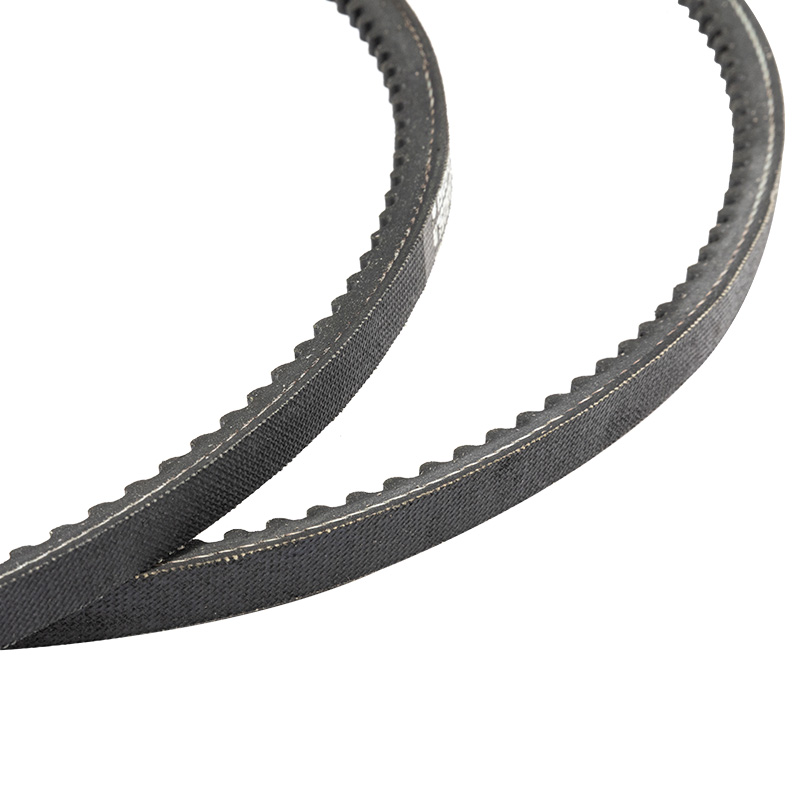Several signs indicate wear and tear in Automotive Raw Edge V-Belts, and being able to identify these issues early can prevent system failures and costly repairs. Common signs of wear and tear in V-Belts include:
1.Visible Cracks:
Significance: Cracks on the surface of V-Belts are indicative of material degradation, often caused by prolonged exposure to heat, friction, and environmental factors. These cracks weaken the belt, making it prone to breakage, which can lead to sudden system failures in the vehicle's engine.
2.Fraying Edges:
Significance: Frayed edges on V-Belts signify extensive wear, reducing the belt's structural integrity. Fraying occurs due to constant rubbing against pulleys and other engine components, leading to diminished performance and an increased risk of snapping, disrupting the functioning of critical engine accessories.
3.Glazing:
Significance: Glazing occurs when the belt becomes polished and smooth, indicating excessive friction and heat. This phenomenon reduces the belt's ability to grip the pulleys properly. Glazed belts are less efficient in transmitting power, potentially causing accessories to operate below optimal levels or leading to intermittent failures.
4.Squealing Noises:
Significance: High-pitched squealing noises during engine operation often result from a slipping V-Belt. This slippage can be caused by improper tension, misalignment, or wear. A slipping belt not only affects the performance of engine accessories but also generates additional heat, accelerating wear on both the belt and pulleys.
5.Slipping:
Significance: A slipping V-Belt fails to transfer power efficiently, causing accessories like the alternator, water pump, or air conditioning compressor to function erratically or not at all. Besides diminished performance, belt slipping generates heat, leading to accelerated wear, and in severe cases, can cause the belt to snap, resulting in total system failure.
6.Uneven Wear:
Significance: Uneven wear patterns along the length of the V-Belt suggest misalignment or imbalanced tension. Misaligned belts can cause uneven stress on the belt's surface, leading to premature wear in specific areas. Identifying and rectifying misalignment issues is crucial to ensure uniform wear and optimal performance.
7.Looseness:
Significance: A loose V-Belt lacks the proper tension required for efficient power transmission. Loose belts are prone to slipping and can lead to ineffective operation of engine accessories. Regular tension checks are essential to maintain the correct tightness, ensuring optimal performance and longevity of the belt.
8.Pulleys Wear:
Significance: Worn-out pulleys have uneven or jagged surfaces that can damage the V-Belt. Such damage results in accelerated wear and may cause the belt to slip or disengage from the pulleys. Inspecting pulleys for signs of wear is vital during belt replacements to prevent premature failure.
9.Vibration:
Significance: Excessive vibrations in the engine compartment are often caused by misaligned or imbalanced V-Belts. Vibrations can lead to discomfort for vehicle occupants and, more importantly, indicate potential issues that, if not addressed, could lead to further wear, reducing the lifespan of the belt and associated components.
10.High Temperatures:
Significance: Elevated temperatures in the engine compartment, especially around the belt area, are indicative of increased friction. Excessive heat can accelerate wear and significantly reduce the belt's lifespan. Monitoring and controlling temperatures are essential to prevent thermal damage and ensure the V-Belt's optimal functioning.
Vehicle owners can identify these issues by regularly inspecting the belts during routine maintenance. Additionally, listening for unusual noises, checking for visible signs of wear, and monitoring the performance of engine accessories can help in detecting problems early.
Epdm Rubber Automotive Raw Edge V-Belts

